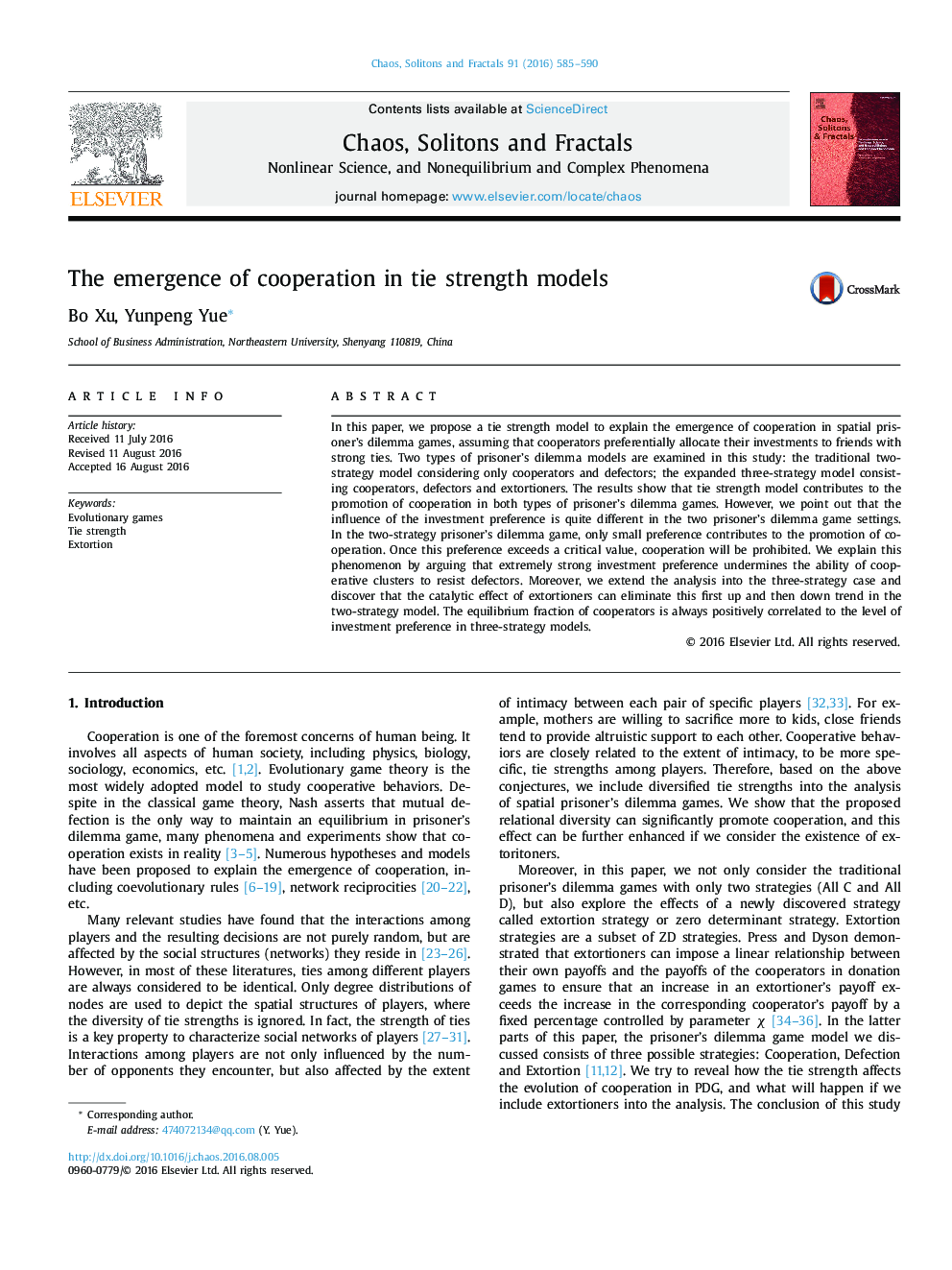| Article ID | Journal | Published Year | Pages | File Type |
|---|---|---|---|---|
| 8254676 | Chaos, Solitons & Fractals | 2016 | 6 Pages |
Abstract
In this paper, we propose a tie strength model to explain the emergence of cooperation in spatial prisoner's dilemma games, assuming that cooperators preferentially allocate their investments to friends with strong ties. Two types of prisoner's dilemma models are examined in this study: the traditional two-strategy model considering only cooperators and defectors; the expanded three-strategy model consisting cooperators, defectors and extortioners. The results show that tie strength model contributes to the promotion of cooperation in both types of prisoner's dilemma games. However, we point out that the influence of the investment preference is quite different in the two prisoner's dilemma game settings. In the two-strategy prisoner's dilemma game, only small preference contributes to the promotion of cooperation. Once this preference exceeds a critical value, cooperation will be prohibited. We explain this phenomenon by arguing that extremely strong investment preference undermines the ability of cooperative clusters to resist defectors. Moreover, we extend the analysis into the three-strategy case and discover that the catalytic effect of extortioners can eliminate this first up and then down trend in the two-strategy model. The equilibrium fraction of cooperators is always positively correlated to the level of investment preference in three-strategy models.
Related Topics
Physical Sciences and Engineering
Physics and Astronomy
Statistical and Nonlinear Physics
Authors
Xu Bo, Yue Yunpeng,
